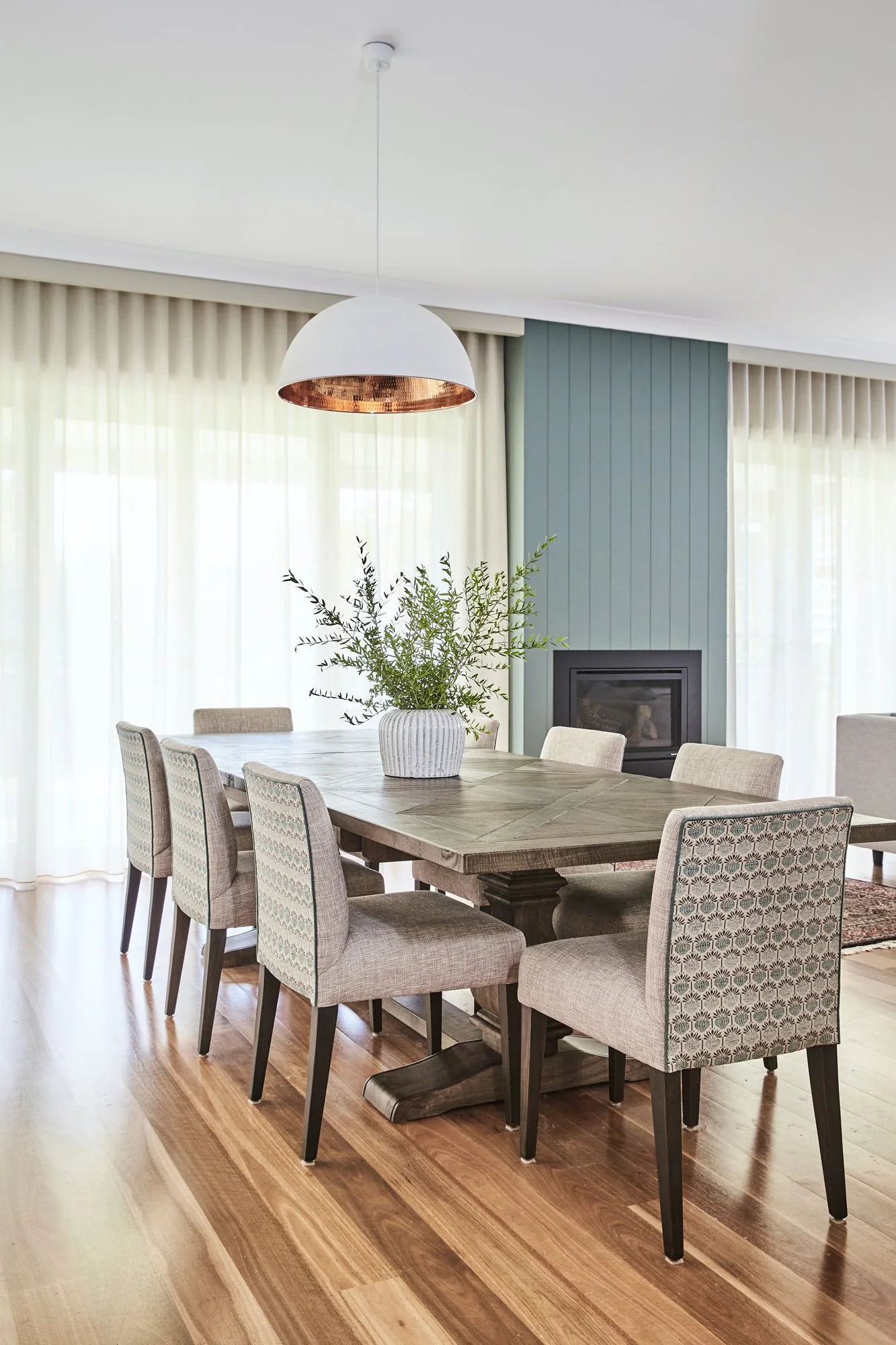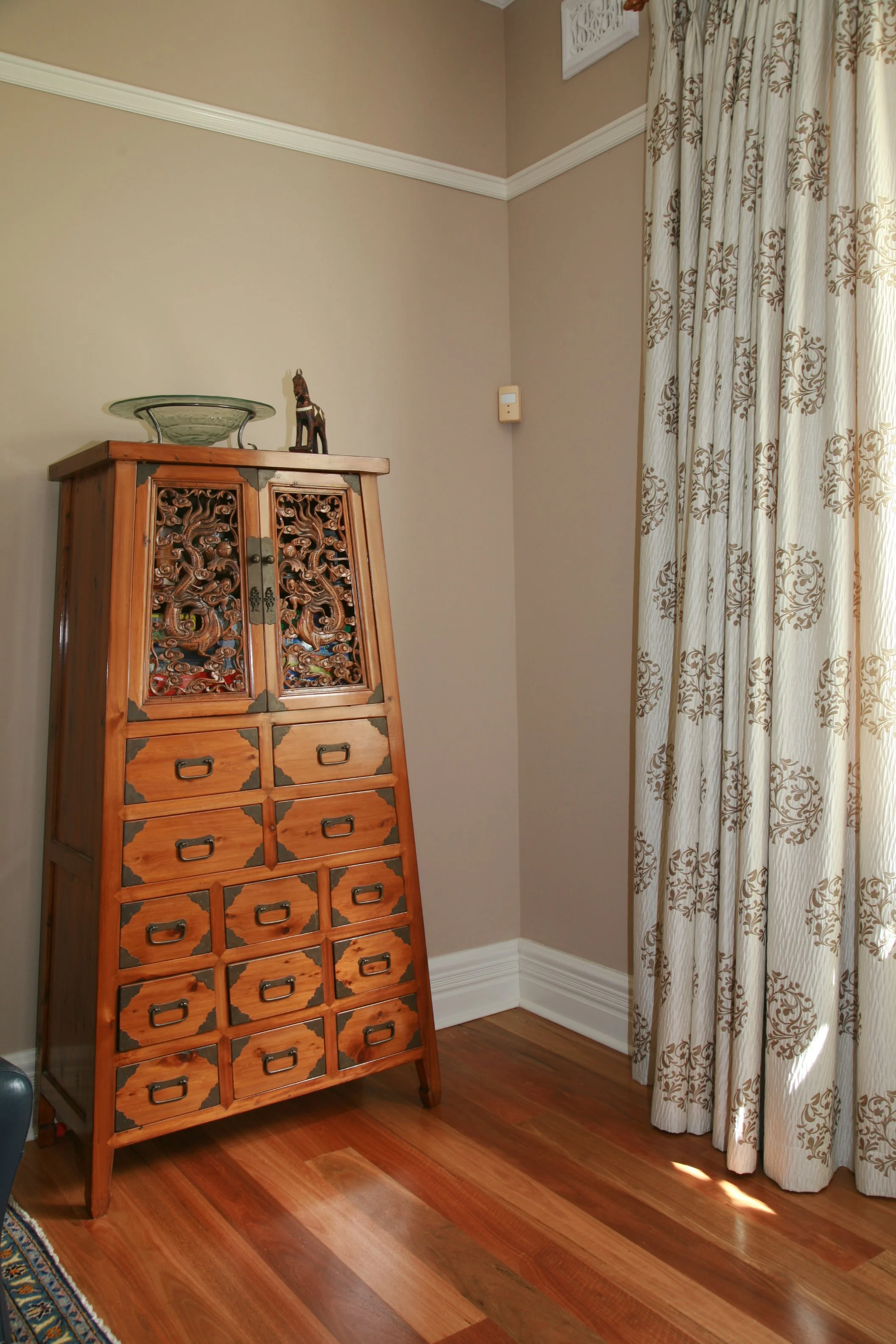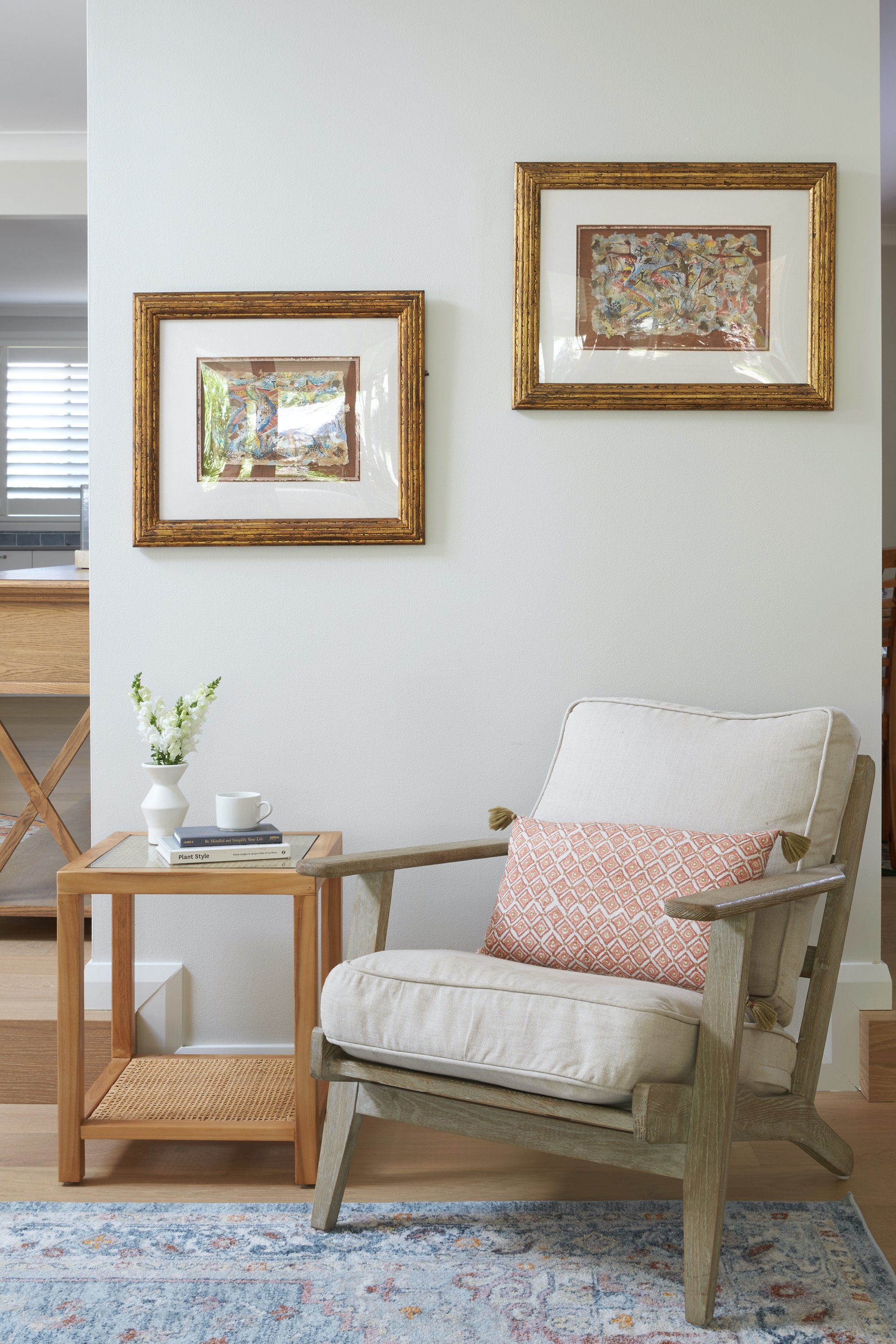The Diderot Effect: When one new piece makes your whole room feel "wrong"
You bring home a beautiful new armchair, rug or pendant light and you absolutely love it. Then, almost overnight, everything else starts to look a bit tired. The cushions feel off, the coffee table seems cheap, the artwork feels dated. Suddenly you are thinking about replacing far more than you planned.
If that sounds familiar, you have just met the Diderot Effect.
For many of my clients, understanding this little design psychology concept is a lightbulb moment. It explains why one perfectly innocent purchase can trigger a whole cascade of changes at home.
What is the Diderot Effect?
The Diderot Effect is named after French philosopher Denis Diderot. He wrote about receiving a luxurious new dressing gown that made the rest of his belongings look shabby. Before long, he was replacing more and more items so that everything matched the quality of the robe.
In modern homes, the same thing happens with interiors. You invest in one elevated piece and suddenly the rest of the room no longer feels good enough. It is not that your old items have changed. Your point of comparison has.
How it shows up in real homes
In interior design, the Diderot Effect can quietly drive endless upgrading.
You buy a new sofa that is incredibly comfortable and beautifully made. Next to it, the old rug looks flat. You replace the rug and now the wall colour feels wrong. The lamps seem flimsy. The artwork looks too small. Before you know it, you are mentally redoing the whole room.
In our open plan Australian homes, the effect can spread even further. A new dining table can suddenly highlight how dated the neighbouring living area feels. A renovated kitchen can throw attention on an older hallway or family room. One improvement shines a spotlight on everything that does not quite measure up.
What you are really noticing is contrast. The new piece sets a higher standard for quality, style or scale. Your eye then judges everything else against this new benchmark. Without a plan, it is easy to slip into constant tinkering rather than making calm, thoughtful decisions.
Why a clear design direction matters
This is where having an overall design direction becomes so powerful. When you have a considered palette and a defined style that suit both your architecture and lifestyle, each new purchase is chosen to support that bigger picture.
Instead of thinking, "I love this chair, I will make it work somehow," you ask, "Does this belong in the story of this home?" The same chair that once made the room feel disjointed can instead become a beautiful focal point when it has been selected with the whole space in mind.
There is also a sustainability benefit. The Diderot Effect can tempt us to get rid of items that are still functional simply because they no longer feel quite right. Before you rush to replace them, it is worth considering whether they can be moved to another room, reupholstered, refinished or balanced with different soft furnishings. Context often makes more difference than we expect.
How an interior designer works with the Diderot Effect
A professional interior designer does not try to fight the Diderot Effect. Instead, we use it deliberately.
At Inside Out Colour & Design, I start by looking at the whole picture. Your existing furniture, flooring, natural light, architectural details and how you actually live in the space all come into play. From there, we identify where a strategic investment will create the most positive flow-on effect, and where your current pieces can stay, be refreshed or simply moved.
Sometimes the smartest move is to upgrade one or two key items that will lift everything around them. Other times it is about getting the foundation right first with paint, window treatments or a rug that ties elements together. The goal is always the same: every new decision should make the room feel more resolved, not less.
A designer also helps you stage changes over time. Rather than reacting to each new purchase, you work to a flexible plan that suits your budget. You might choose the main furniture now, update lighting next, then look at joinery or window treatments later. Each step is linked, so the Diderot Effect works in your favour instead of dragging you into an endless cycle of "fixing" things.
Turning the Diderot Effect into your ally
Understanding the Diderot Effect is not a warning to stop buying lovely things for your home. It is simply a reminder to pause when one new purchase makes everything else feel wrong.
Instead of rushing straight to replace half the room, it can be helpful to step back and ask what your home is really wanting to become. Do you need a clearer style direction? Are there a few key updates that would help everything feel more cohesive? Could an existing piece shine again in another space?
Ready to feel more at ease with your home?
If you are noticing that one new purchase keeps setting off a chain reaction at home, you are definitely not alone. The Diderot Effect shows up in all kinds of houses and apartments. Most of the time it is simply a sign that your home is ready for a more connected, intentional approach.
You do not have to figure that out on your own. If you would like a calm, supportive guide to help you make sense of your rooms and plan the next steps, I would love to help. We can sit down together, talk about how you live and how you want your home to feel, and create a plan that makes future choices easier and more enjoyable.
Whether you are ready to refresh one room or quietly work towards a whole home that feels more "you", please get in touch and let’s start the conversation!






